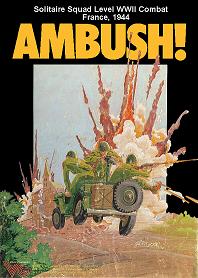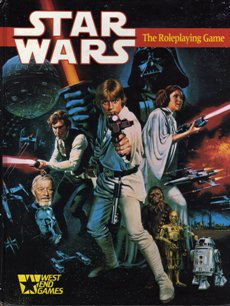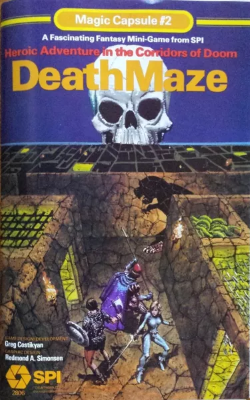Related Research Articles

Ambush! is a man-to-man wargame developed by Avalon Hill. It was released under Avalon's Victory Games label and was developed by Eric Lee Smith and John Butterfield. It has been out of print since Avalon Hill was disbanded in 1998.

Civilization is a board game designed by Francis Tresham, published in the United Kingdom in 1980 by Hartland Trefoil, and in the United States in 1981 by Avalon Hill. The Civilization brand is now owned by Hasbro. It was out of print for many years, before Gibsons Games republished it in 2018. The game typically takes eight or more hours to play and is for two to seven players.

4X is a subgenre of strategy-based computer and board games, and includes both turn-based and real-time strategy titles. The gameplay involves building an empire. Emphasis is placed upon economic and technological development, as well as a range of military and non-military routes to supremacy.

Sky Galleons of Mars is a board wargame designed by Frank Chadwick, Marc W. Miller and Loren Wiseman, published in 1988 by Game Designers' Workshop. It is set in an alternate Victorian Era where the major nations of Earth are extending their colonial interests on Mars and Venus. The discovery of Liftwood, a Martian plant endowed with anti-gravity powers, allows the deployment of aerial fleets in the skies of the Red Planet.
Carrier is a solitaire wargame published in 1990 by Victory Games, a subsidiary of Avalon Hill.

Galactic Civilizations II: Dread Lords is a 4X turn-based strategy by Stardock for Microsoft Windows. It is the sequel to the 2003 game, Galactic Civilizations, and was released at retail and on Stardock's online subscription service, TotalGaming.net, on February 21, 2006. An expansion, Dark Avatar, was released in February 2007. A second expansion, Twilight of the Arnor, was released in April 2008.

Star Wars: The Roleplaying Game is a role-playing game set in the Star Wars universe, written and published by West End Games (WEG) between 1987 and 1999. The game system was slightly modified and rereleased in 2004 as D6 Space, which used a generic space opera setting. An unrelated Star Wars RPG was published by Wizards of the Coast from 2000 to 2010. Since 2012 the official Star Wars role-playing game is another unrelated game, published by Fantasy Flight Games.

Advanced Civilization is an expansion game for the board game Civilization, published in 1991 by Avalon Hill. Ownership of the original game is necessary to play. While Civilization is in print as of November 2019, Advanced Civilization is not, following the dissolution of the original Avalon Hill game company and sale of all rights to titles to Hasbro in 1998.

Dune is a strategy board game set in Frank Herbert's Dune universe, published by Avalon Hill in 1979. The game was designed by Bill Eberle, Jack Kittredge and Peter Olotka. After many years out of print, the game was reissued by Gale Force Nine in 2019 in advance of the 2021 Dune film adaptation.
The Republic of Rome is a strategy board game, designed by Don Greenwood, Robert Haines, and Richard Berthold, and released by Avalon Hill in 1990. It takes place in the Senate of the ancient Roman Republic. The rights are now owned by Valley Games.

Incunabula is a video game designed by Steve Estvanik and released by Avalon Hill for IBM PC compatibles in 1984. It is the original computerized version of Avalon Hill's Civilization board game, preceding Sid Meier's Civilization which was published in 1991.
Civilization is a series of turn-based strategy video games, first released in 1991. Sid Meier developed the first game in the series and has had creative input for most of the rest, and his name is usually included in the formal title of these games, such as Sid Meier's Civilization VI. There are six main games in the series, a number of expansion packs and spin-off games, as well as board games inspired by the video game series. The series is considered a formative example of the 4X genre, in which players achieve victory through four routes: "eXplore, eXpand, eXploit, and eXterminate".

Deathmaze is a fantasy board game published by Simulations Publications (SPI) in January 1980 that falls into the general category of dungeon crawls, more specifically, dungeon games in which players enter a dungeon, massacre the dungeon dwellers and steal their treasures.
Buck Rogers – Battle for the 25th Century is a strategy board game published in 1988 by TSR, Inc.
Patton's Best is a World War II solitaire wargame. It was designed by Bruce Shelley and published by Avalon Hill in 1987.

Race for the Galaxy is a card game designed by Thomas Lehmann. It was released in 2007 by Rio Grande Games. Its theme is to build galactic civilizations via game cards that represent worlds or technical and social developments. It accommodates two to four players by default although expansions allow for up to six players, as well as solo play. The game uses iconography in place of language in some places, with complex powers also having a text description. While appreciated by experienced players for being concise, some new players find the icons difficult to learn and to decipher.
Hyperborea is a fantasy board game designed by Pierluca Zizzi.

The Hunt for Red October is a naval board game published by TSR in 1988 that is based on the 1984 novel by Tom Clancy.

Open Fire: Solitaire Tank Combat in WWII is a solitaire board wargame published by Victory Games in 1988.
Red Barricades: ASL Historical Module 1 is a board game published in 1990 by Avalon Hill.
References
- ↑ "Archived copy". Archived from the original on 2015-06-17. Retrieved 2011-10-24.
{{cite web}}: CS1 maint: archived copy as title (link) - ↑ "A Galaxy Full of Riches".
- ↑ "Archived copy". Archived from the original on 2015-06-17. Retrieved 2011-10-24.
{{cite web}}: CS1 maint: archived copy as title (link) - ↑ "Statement from FFG regarding the "Merchant of Venus" situation | Merchant of Venus".
- ↑ Siggins, Mike (January 1989). "General Games". Games International (2): 13–15.
- ↑ "Become a Trader Among the Stars with Merchant of Venus – Black Gate". 8 January 2016.
- ↑ https://archive.org/details/casus-belli-049/page/n29/mode/2up